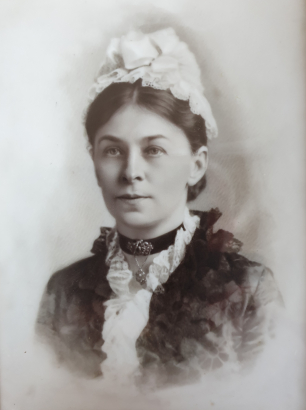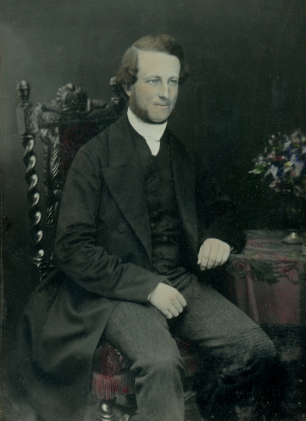Rev James Stewart Gammell
(1826-1899)
James Stewart Gammell was the eldest son of Captain James Gammell of Ardiffery and his wife Sydney Holmes. He was born on 21 September 1826 at Beech Hill, Donoghmore, County Down. His second name Stewart was almost certainly given him as in 1824, his father's sister Mary Gammell had married The Rev. John Stewart.
About 1834, when he was about eight years old, his parents moved to Edinburgh in order no doubt, to ensure he and his brothers had a suitable education. James was sent first to Circus Place School, and then to Edinburgh Academy, where he was a pupil from 1837 to 1844. His scholastic career at Edinburgh Academy is worthy of note: he was Dux of his class four times, Dux of the school in 1844; won the Michell Medal in 1843; the Mathematical Medal in 1844, and was "Best" in Greek, Latin, French and Scripture in the same year. From school he went to Glasgow University for further general education and then in 1848 to Jesus College, Cambridge with a Scholarship in Mathematics. He graduated from Cambridge in 1851 with Honours and became a Master of Arts in 1854.
James Stewart was ordained into the Church of England as a deacon in 1852, becoming a priest in 1853. In 1952 he became curate in the village of Dolvor (Dolfor) in Montgomeryshire. After five years at Dolvor, in 1857 he moved to London, and became firstly curate of St. Paul's Hammersmith, and then curate of St. Paul's Vauxhall. In 1860, he was appointed first Vicar of the new parish church of St. Mary Magdalene at Outwood, a small mining village between Leeds and Wakefield in Yorkshire.
It was in Outwood, where he was to remain for twenty years that his main work for the Church was carried out, where he was to start his married life and where his four children were to be born.
On 6 September 1866, he married Anne Bramley in St Paul's Church, Alverthorpe, where the Bramley family lived. Anne was the second daughter of Henry Alcock Bramley and his wife Elizabeth (nee Cooper) of The Haugh, Silcoates, Yorks. Henry Bramley and his wife are both buried in the churchyard at Outwood, and the East window and the one immediately next to it, form a memorial to them, given by their four children, one of whom was of course Anne Bramley/Gammell. This family of Bramley was an old established Yorkshire family, based on Addingham, near Skipton, where Anne was born on 9 May 1841. Anne's grandfather, Richard Ramsden Bramley, had been Mayor of Leeds in 1806/7.
James and Anne had four children as follows:
|
Name |
Born |
Died |
|
25 June 1867 |
25 February 1946 |
|
|
30 October 1871 |
20 December 1959 |
|
|
12 November 1872 |
31 December 1874 |
|
|
31 January 1875 |
15 August 1962 |
They were all born at Outwood, while their father was Vicar there.
As has already been stated, James was the first Vicar of Outwood, and the uphill struggle he had to get the church established is best illustrated in his own words, preaching when the church was enlarged in 1888:
“You will remember when this church was talked about, how little encouragement there was in many quarters; how you were laughed at. What!, you are going to build a church? How many people will you get? Five and twenty, fifty? I have heard Mr. Burrell tell the story. He had the first of the battle to bear; he was laughed at; he was ridiculed, he was opposed, aye, and the opposition went on for long after. When I first came here there were few people whose hearts were thoroughly in the work. We knew where we were going, and what we were aiming at. Although the church was built in order to be enlarged, we did not expect to see it accomplished in our days, but, thank God, it is there and full.”
During his ministry, he saw the building of the Vicarage, completed in 1867, a Vicar's
room in 1874, and a Sunday School built on a site near the church capable of housing 300 pupils; in 1860 there had been twenty five pupils, with the Vicar himself as the Teacher.
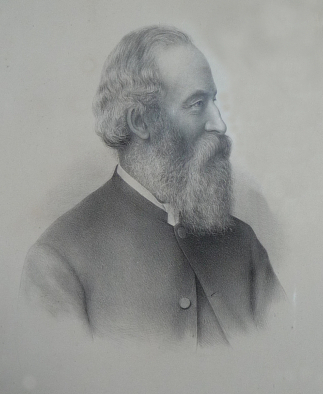
James S Gammell etching about 1880 from Outwood Church
A tribute to the work done by James while he was at Outwood, was given by the then Vicar, when he announced his death at the end of his sermon in November 1899. His words were as follows:
“Within the last few days the news has reached us that one, who was the first vicar of Outwood, and who laboured in this parish for God and man, the most part single handed for the long space of twenty years has been called away to his rest. James Stewart Gammell will always be remembered for his indefatigable zeal and untiring energy, and for the deep love of all to whom he ministered. He came to this parish when there was but little church life in it. He banded together a community which were a blessing not only to himself, but to those who succeeded him in his labours. He laid such a foundation of Church Doctrine and Christian Principles that it has been comparatively easy
to build up the superstructure, and to make Outwood Church life such as we see it at the present day. He came to this parish when education was little thought of, and when there was no such thing as either compulsory or assisted education. That which is now recognised as part of the Government Educational System was then taken up voluntarily by him: I mean the Night School. This was no easy task; it was dull and monotonous, but he took it up cheerfully and willingly, and it was to him a great delight. Many a lad may attribute his success in life to what he learned at the Night School. We all know that he was compelled to resign his parish due to ill-health; but he did not forget it, and when fortune shone upon him, he remembered the parish in which he had laboured. For ten years he contributed considerably towards the maintenance of an assistant Curate, and when our church was enlarged in 1888, he built our neat side chapel in thankful remembrance of twenty years work for God and man in this parish.”
Three more extracts from 'A short History of the Parish Church of St. Mary Magdalene, Outwood' published in 1958 to mark the centenary of the church illustrate the work he did and the standing he had as the vicar of Outwood:
“The Gammell family was very generous to the church, even after Mr. Gammell retired. In 1889, Miss Bramley, Mrs. Gammell's sister gave another stained glass window on the south side of the church, in memory of her nephew Henry Wyatt-Smith, drowned while boating in Hampshire. In 1890 Mrs. Gammell gave the church its bell. When the church was enlarged in 1888 Mr. Gammell gave £250 for the building of the 'Gammell Memorial Chapel', where you can read on a plaque the inscription he himself worded 'To the glory of God, and in humble and thankful remembrance of twenty years work for God and men in this church and parish, this chapel was built A. D. 1887 by James Stewart Gammell, first Vicar of Outwood 1860-1880.”
“The foundation stone for the Gammell Memorial Chapel and the new South Aisle was laid on Tuesday 19 July 1887 by The Revd. J.S. Gammell in the presence of a large number of spectators, and at the close of a very bright afternoon service in the church. On this occasion Mr. Gammell referred to the first time he came to Outwood, and only a few people came to church. "There were many who came for the first four or five Sundays in order to see what the church and the new parson were like." He understood afterwards that a number of very respectable people were angry with him because he said he would like to know how many had come to the House of God to worship, and how may had come to see the new building, and to see what the Parson was like. His words went home to many of them, and the congregation was a very small one for a long time after.”
“On November 2nd 1899, the first Vicar of Outwood the Revd. J.S. Gammell died, and the people of the parish felt that although there was a memorial in the church to Mr. Gammell's work in Outwood, which he gave during his lifetime, yet there should be a memorial from the parish, and this found expression in a stained glass window on the North of the church, which was dedicated on April 28th 1901.”
James left Outwood owing to serious ill-health in 1880, and moved with his family to Clifton, near Bristol, where he took up residence in Oakfield Road. On his departure from Outwood he was presented by the parishioners with a handsome half hunter gold watch, suitably inscribed; this was a very fine gesture, and emphasises his popularity, when it is remembered that practically the whole of his congregation consisted of miners.
Just why James moved to Bristol is not clear, but it may have been to enable his son Sydney to obtain a Public School education at nearby Clifton College, where, in fact the young man went in May 1881. He may also have been influenced by the fact that his father, by this time a widower, was living in nearby Bath. As far as we know, he did not take up church work in Bristol, probably owing to his health, but the fact that he must have known by this time that he was heir to his aging uncle, Andrew Gammell of Drumtochty, may also have influenced him against taking on immediate ecclesiastical commitments.
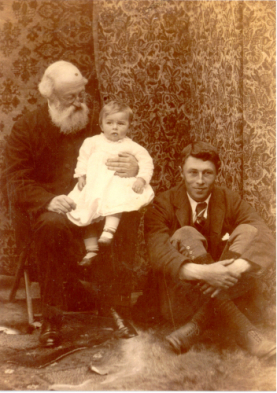
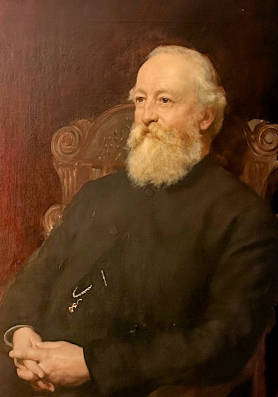
His uncle Andrew eventually died on 18 March 1883 and James came into the properties of Drumtochty and Countesswells as well as a cash sum which we can estimate as upwards of £50,000. Family tradition has it that he hired a special train to take him, his family and his possessions from Bristol to Scotland, but whether there is any foundation for this is not known. On the death of his father on 23 September 1893, he inherited the estate of Ardiffery in north Aberdeenshire, but in this instance no cash, his father understandably deciding that his other sons, were in greater need than James Stewart.
James Stewart was a man of culture and intelligence as his scholastic record shows, and also a kindly and lovable character as his record as vicar of Outwood demonstrates. Thus it is doubtful whether the change from parish priest to a very substantial landed proprietor was altogether to his liking, and almost certainly the financial implications at a time when agricultural depression was looming on the horizon were lost on him. It is not surprising therefore that when he became a seemingly rich man, he spent liberally. He did not undertake much direct church work in Scotland, other than becoming chaplain to the Bishop of Brechin, but devoted a great deal of time and money to ecclesiastical and charitable undertakings. He built and endowed the Episcopal Church of St. Palladius at the gates of Drumtochty; a rectory and Church Hall to go with it, and a lodge for his blind organist, George Goodair, whom he brought up from Outwood. At the same time, as has been stated above, he was generously supporting the cost of a curate, and other activities at his old parish of Outwood. Before the church of St. Palladius was completed, he conducted services twice every Sunday in the billiard room at Drumtochty, with his wife at the organ, so as well as giving monetary help, he also personally lived an active church life.
In his obituary notice the following appears:
“......It was frequently said of him that the poor never appealed to him in vain. He was a large and unostentatious contributor to numerous institutions and charities, and assisted many poor congregations. The castle was also the home for a short stay to clergymen and deserving young men whose health had broken down through overwork, while he also considered the members of his old congregation at Outwood in their sickness, and colliers from Yorkshire could frequently be seen enjoying the pure air in the Glen of Drumtochty.”
In spite of all the ecclesiastical and charitable work that was going on, James Stewart did not neglect his estates. He built new kennels and a gamekeeper's house, a new carriage drive to the castle, and laid on a water supply to kennels, church and Lodge cottage. He also had constructed two tennis courts, which involved excavating solid rock, and employing a large force of labour to level the site. It is thus hardly surprising that by the time he died, much of the cash he had inherited had been dissipated, and that the estates had had mortgages raised on them, particularly as he had settled £9,000 on his impecunious younger brother Frederick, and £5,000 on each of his two daughters.
James Stewart died on 2 November 1899, at the age of 73. He had not enjoyed good health for a good many years, and contracted pneumonia on a trip to Glasgow. Although he partially recovered, he was never himself again and died about three months later. The estates passed on his death automatically to his son Sydney James Gammell under the deed of entail. His personal estate which had dwindled to only just over £10,000 from the £40,000 plus he had inherited some sixteen years previously, was subject to several large legacies, and most of the contents of Drumtochty were left to his wife. He also specified that Countesswells was to be put at the disposal of his wife either as a dower house or to be let for her account. This last clause, as it turned out, was never implemented, but nevertheless, Sydney James can have received practically nothing in cash to serve as working capital in the running of the estates.
James Stewart was buried in the churchyard of St. Palladius, the church he had built at the gates of Drumtochty. His wife, Anne decided to leave Scotland, and take up residence with her brother, a bachelor, and Canon of Lincoln Cathedral. This brother, Canon Henry Ramsden Bramley lived at Nettleham Hall, just outside Lincoln. Anne died at Nettleham on 26 July 1916.

